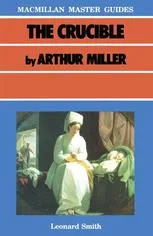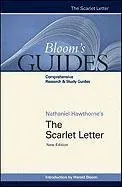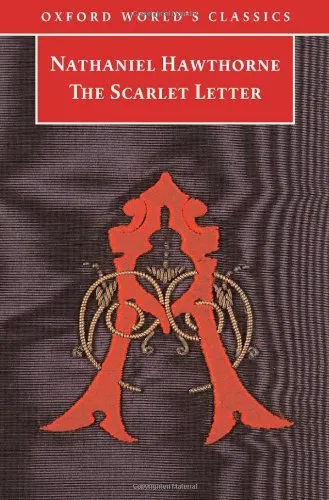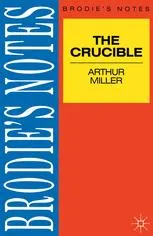The Crucible by Arthur Miller
5.0
بر اساس نظر کاربران

شما میتونید سوالاتتون در باره کتاب رو از هوش مصنوعیش بعد از ورود بپرسید
هر دانلود یا پرسش از هوش مصنوعی 2 امتیاز لازم دارد، برای بدست آوردن امتیاز رایگان، به صفحه ی راهنمای امتیازات سر بزنید و یک سری کار ارزشمند انجام بدینکتاب های مرتبط:
مقدمهای بر نمایشنامه The Crucible اثر آرتور میلر
آرتور میلر یکی از بزرگترین نمایشنامهنویسان قرن بیستم است و The Crucible یکی از شناختهشدهترین آثار او به شمار میآید. این نمایشنامه برای اولین بار در سال ۱۹۵۳ به اجرا درآمد و به سرعت جایگاه خاصی در ادبیات نمایشی پیدا کرد.
خلاصهای از کتاب
نمایشنامه The Crucible در دورهای از تاریخ آمریکا در سال ۱۶۹۲ در شهر سالماست، جایی که دادگاههای جادوگری برگزار میشود. داستان بر مبنای اتفاقات واقعی این دادگاهها پیش میرود و نشان میدهد چگونه ترس جمعی و شایعات میتوانند به تخریب زندگی افراد منجر شوند. شخصیت اصلی، جان پروکتور، به مبارزه با تهمتها و دروغهایی که جامعه را در بر گرفتهاند میپردازد. میلر از این داستان برای مقابله با مککارتیسم در دهه ۱۹۵۰ استفاده کرد و به نقد جامعه زمان خود پرداخت.
نکات کلیدی
- تحلیل قدرت و سوءاستفاده از آن: نمایشنامه نشان میدهد که چگونه افراد قدرتمند از موقعیت خود برای کنترل و ترسی که ایجاد کردهاند، بهرهبرداری میکنند.
- اهمیت صداقت و درستکاری: پروکتور به عنوان نمادی از صداقت و مبارزه با فساد ارائه میشود و نشان میدهد که این ویژگیها در نهایت به پیروزی اخلاقی میانجامد.
- ترس و شایعات به عنوان ابزار کنترل: یکی دیگر از درسهای این نمایشنامه نشان میدهد که چگونه ترس و شایعات میتواند به سرعت منجر به فاجعه شود.
جملات معروف از کتاب
نمایشنامه The Crucible دارای جملات تاثیرگذار زیادی است که بازتابدهنده عمیقترین احساسات انسانی هستند. برخی از این جملات عبارتند از:
"این جامعه برای فریب و ریا ساخته شده است، و من نمیتوانم در سکوت نقشی در بزرگتر کردنش داشته باشم."
چرا این کتاب مهم است؟
نمایشنامه The Crucible فراتر از یک روایت تاریخی ساده است و به عنوان تمثیلی از مبارزه با ظلم و فشار حکومتی در زمان میلر و حتی زمان حال مطرح است. میلر با به تصویر کشیدن عواقب خطرناک ناشی از ترس و شایعات، تلاشی برای جلب توجه به موضوعاتی مانند عدالت اجتماعی، سلامت روانی و نیاز به صداقت در جامعه دارد. این نمایشنامه همچنان به عنوان یک اثر مهم در ادبیات آمریکایی باقی مانده و به بررسی و تعبیر آن در دورههای مختلف ادامه میدهند.
Introduction to "The Crucible" by Arthur Miller
Arthur Miller's "The Crucible" stands as a powerful testament to the perils of social hysteria and the dangers of disregarding truth in the service of ideology. Written in 1953, Miller's play is a dramatized and partially fictionalized story of the Salem witch trials that took place in the Massachusetts Bay Colony during 1692/93. Delving into themes of fear, power, and integrity, "The Crucible" serves as a timeless narrative that's both a gripping historical drama and a cautionary tale relevant to contemporary society.
Summary of the Book
At its core, "The Crucible" is a drama that unfolds in four acts. The plot kicks off in the small town of Salem, where the fear of witchcraft begins to take root. A group of young girls, led by Abigail Williams, is caught dancing in the forest, and soon, rumors start swirling about their involvement in witchcraft. To divert attention from their own misdeeds, the girls resort to accusing others in the town of practicing witchcraft.
The trials ensue as fear and paranoia grip the town, leading to the arrest of many innocent individuals. John Proctor, a respected farmer, becomes embroiled in the turmoil when his wife, Elizabeth, is accused of witchcraft. As Proctor seeks to expose the hysteria and the falsehoods propagated by Abigail and her cohort, he faces moral dilemmas and the overarching question of personal integrity.
Miller deftly weaves a narrative that highlights how individuals and communities can succumb to collective hysteria, leading to grave injustices. The play culminates in Proctor's ultimate decision to prioritize truth and righteousness over self-preservation, offering a poignant commentary on the human condition and the cost of standing by one's principles.
Key Takeaways
The destructive power of fear and suspicion when left unchecked.
The moral and ethical struggles faced when truth and integrity are pitted against self-interest and survival.
The dangers of allowing authority to go unquestioned and unchecked, leading to mass hysteria.
The timelessness of the struggle for personal redemption and honor.
Famous Quotes from the Book
Arthur Miller's writing is laced with profound observations and sharp insights. Some of the most memorable quotes include:
"Because it is my name! Because I cannot have another in my life! Because I lie and sign myself to lies! Because I am not worth the dust on the feet of them that hang! How may I live without my name? I have given you my soul; leave me my name!"
"We are what we always were in Salem, but now the little crazy children are jangling the keys of the kingdom."
Why This Book Matters
"The Crucible" remains relevant today as it addresses the perennial issues of social scapegoating and the mechanisms of mass hysteria. Arthur Miller wrote the play during the McCarthy era, a time of rampant anti-communist sentiment in the United States. The play served as an allegory for the "witch hunts" led by Senator Joseph McCarthy, during which numerous innocents were accused and blacklisted without substantial evidence.
Miller's insightful exploration of the darker sides of human nature and societal behavior ensures that "The Crucible" is not just a historical account but a dynamic work that continues to resonate with contemporary audiences. It invites readers and viewers alike to reflect on the importance of truth, the courage required to defend it, and the dangers posed by unchecked power and irrational fears.
دانلود رایگان مستقیم
شما میتونید سوالاتتون در باره کتاب رو از هوش مصنوعیش بعد از ورود بپرسید
دسترسی به کتابها از طریق پلتفرمهای قانونی و کتابخانههای عمومی نه تنها از حقوق نویسندگان و ناشران حمایت میکند، بلکه به پایداری فرهنگ کتابخوانی نیز کمک میرساند. پیش از دانلود، لحظهای به بررسی این گزینهها فکر کنید.
این کتاب رو در پلتفرم های دیگه ببینید
WorldCat به شما کمک میکنه تا کتاب ها رو در کتابخانه های سراسر دنیا پیدا کنید
امتیازها، نظرات تخصصی و صحبت ها درباره کتاب را در Goodreads ببینید
کتابهای کمیاب یا دست دوم را در AbeBooks پیدا کنید و بخرید
1484
بازدید5.0
امتیاز0
نظر98%
رضایتنظرات:
5.0
بر اساس 0 نظر کاربران
Questions & Answers
Ask questions about this book or help others by answering
No questions yet. Be the first to ask!







